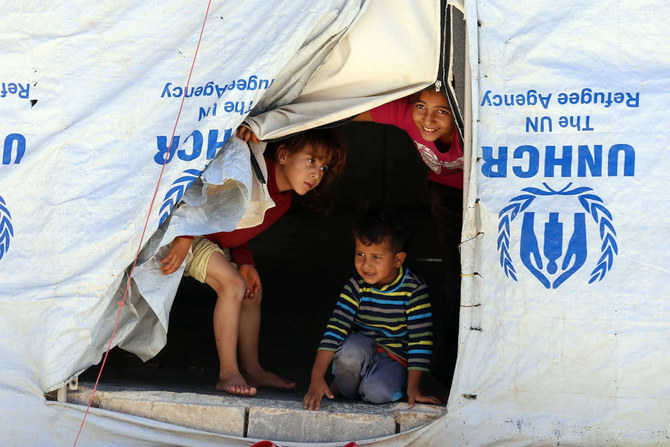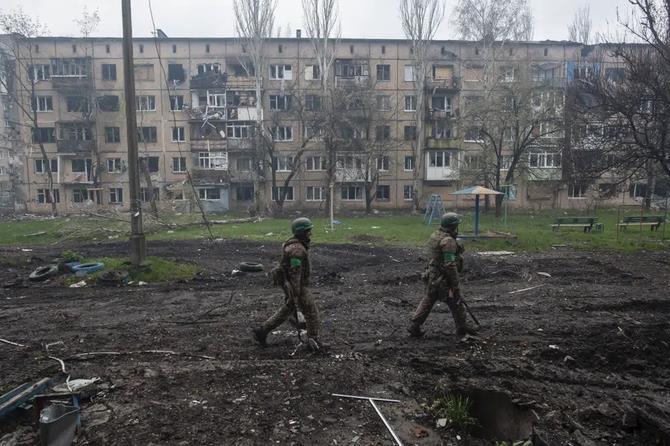
In recent days, the clashes along Turkey’s border with Greece over migration policy have de-escalated, but the crisis highlighted the dilemma of refugees with nowhere left to go.
The Syrian civil war has pushed nearly 3.6 million Syrian refugees into Turkey, which now hosts more refugees than any other country, despite closing its border to Syrian refugees in 2015. The Turkish government has long argued that other countries should do more to help. In 2016, Turkey and the EU reached an agreement designed to limit the influx of Syrian refugees into the EU. Among other measures, Turkey agreed to take back some who fled to Greece and do more to prevent refugees and migrants from leaving Turkey, while the EU agreed to provide a substantial aid package and to resettle some Syrian refugees in Europe. The agreement significantly reduced the flow of migration into the EU.
However, Turkey continued to feel the strain of hosting so many refugees. Then a new round of fighting in northwestern Syria sparked the biggest single displacement of the Syrian civil war, with nearly 1 million fleeing since December as Syrian regime forces neared Idlib, raising the possibility that another million might flee the city. Much of Turkey’s military and diplomatic approach to the situation in Syria was designed to prevent a new wave of refugees pressing against its border.
Frustrated with a lack of support from Europe, President Recep Tayyip Erdogan said in late February that Turkey would no longer prevent refugees and migrants from crossing the land border with Greece. Indeed, Turkish authorities encouraged, facilitated, and reportedly even forced some people to cross the border. Greece responded with harsh tactics to refuse the migrants entry, while the EU’s foreign policy chief told migrants and refugees that the border is “a closed door.”
These incidents have highlighted a reality that many refugees have faced — trapped with their backs against a wall while hostile forces threaten their lives. Displaced Syrians in the Idlib region are today caught between a closed Turkish border and a brutal enemy that is closing in. While many in northwestern Syria hope that Turkey will hold off the Assad regime, the recently agreed cease-fire might only delay the regime’s advance. Meanwhile, other refugees and migrants found themselves caught between the Turkish and Greek borders, amid tear gas shot from either side and unwelcoming, even brutal, security forces at both ends.
Displaced Syrians in northeastern Syria and tensions along the Turkey-Greece border are perhaps the most pressing examples of trapped refugees today, but they are hardly alone. On the Greek island of Lesbos, Syrian refugees and others who managed to reach the island’s shores have found themselves trapped in squalid, overcrowded conditions and unable to move on. There are many examples of refugees who have managed to flee to a safer location, only to become stuck in refugee camps.
Often, refugees and migrants end up mixed together, making it difficult to distinguish between those fleeing violence and those fleeing poverty or both. Migrants and refugees in Libya have found themselves forced into horrific detention centers, sometimes trapped between fighting factions, and forced back from dangerous sea crossings. Venezuelans fleeing political violence and economic collapse have faced growing Latin American border restrictions, some finding themselves unexpectedly trapped. In early 2019, the US began requiring asylum seekers arriving at the US-Mexico border to stay in Mexico and wait for their asylum hearings, leaving tens of thousands of Central Americans fleeing violence and poverty stuck at the border in poor conditions.
This phenomenon is not new, with multiple historical examples. In 2000, 10,000 Afghan refugees were stranded on sandbars in the Pyandzh River between Afghanistan and Tajikistan, while the Taliban shelled them and Tajik authorities denied them an escape. An infamous historical example was the St. Louis ship carrying more than 900 people, mostly German Jews, fleeing Nazi Germany in 1939. The passengers originally had visas to enter Cuba, which suddenly changed its asylum policy and refused to accept them. The US also declined to take them. The ship sailed back to Europe, where 254 of the passengers died in the Holocaust. The Second World War offers many more examples of refugees who were unable to find safe haven.
The practical and moral lessons of the Holocaust and Second World War led to the creation of today’s international legal protections, which are designed to protect those fleeing violence and persecution. The key components of the international refugee protection regime are the 1951 Refugee Convention and the creation of the UN High Commissioner for Refugees.
However, the norms and treaties that underpin that system are eroding. Huge refugee flows, such as the Syrian crisis, place severe strain on a few countries, which receive limited assistance from others. This combines with other pressures — such as growing ethnonationalism, increasing skepticism about the global order, the risk that climate change will increase migration flows, and the increasing difficulty in distinguishing between refugees fleeing violence and migrants seeking economic opportunity — to threaten international protections for refugees.
The UN’s 2016 New York Declaration for Refugees and Migrants took important steps to address these issues. However, amid the coronavirus pandemic, the worst displacement crisis in Syria’s civil war, and decreasing political interest in defending the role of multilateral action on controversial issues such as refugees and migration, there is a serious risk that protections for refugees will weaken at a time when they are particularly needed.
• Kerry Boyd Anderson is a writer and political risk consultant with more than 16 years’ experience as a professional analyst of international security issues and Middle East political and business risk. Her previous positions include deputy director for advisory with Oxford Analytica and managing editor of Arms Control Today. Twitter: @KBAresearch
Disclaimer: Views expressed by writers in this section are their own and do not necessarily reflect Arab News" point-of-view











